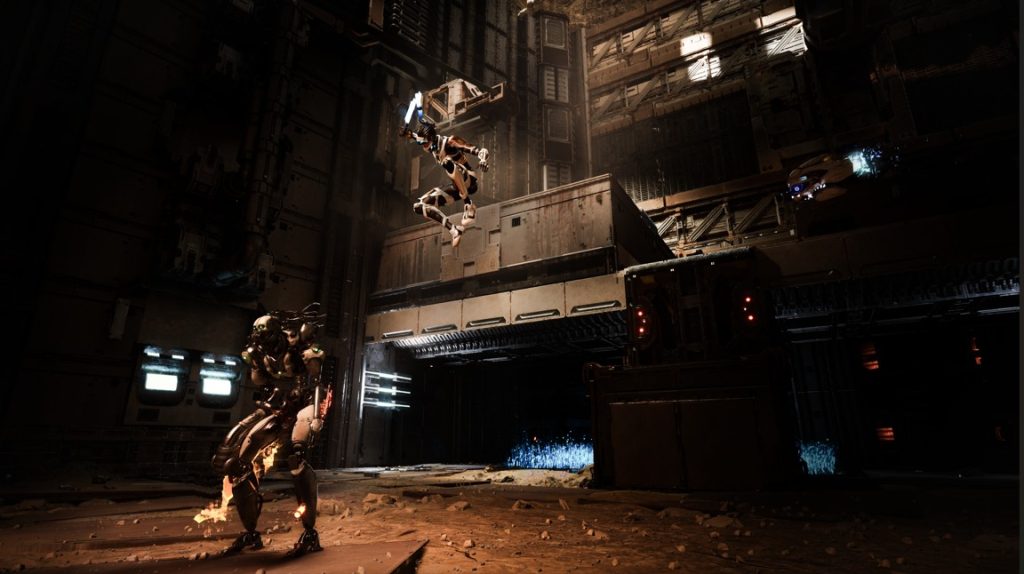Steel Seed, developed by Storm in a Teacup and published by ESDigital Games, emerges as a bold new entry in the stealth-action genre, blending atmospheric world-building with emotional storytelling. Available now on PC (Steam, Epic Games Store), PlayStation 5, and Xbox Series X|S, this title invites players into a post-apocalyptic future where the last remnants of humanity are trapped beneath the earth, caught between extinction and a machine-dominated fate.

A World on the Brink – And a Story That Resonates:
From the very first moments, Steel Seed’s narrative and setting gripped me in a way I didn’t expect from a sci-fi action game. The world is meticulously crafted: cold industrial corridors, eerie biodomes, and haunting soundscapes set the stage for a journey that’s as much about survival as it is about exploring the boundaries between human and machine. The story, revised by BAFTA-winning writer Martin Korda, follows Zoe, a newly awakened cyborg, and her drone companion Koby as they delve into a hostile underground facility searching for answers and hope for mankind’s future.
What truly stands out is the emotional core beneath the metal. Zoe and Koby’s relationship is more than just functional, their banter and interactions provide warmth and humanity in an otherwise desolate world. The narrative asks big questions about trust, control, and resilience, making every step of the journey feel meaningful.
Stealth, Parkour, and Dynamic Combat:
Steel Seed is not your typical run-and-gun action game. Instead, it rewards patience, precision, and strategic thinking. The stealth mechanics are robust-line-of-sight, noise, and environmental distractions all play crucial roles. Using shadows and cleverly placed holographic grass, I found myself slipping past patrols, tagging enemies with Koby, and savoring the tension of each encounter. When stealth fails, combat is a viable backup, but it’s clear the game wants you to think before you act.
Parkour and platforming are integral, with Zoe’s agility allowing for creative navigation through the facility. The world itself is designed for machines, not humans, making each traversal feel both challenging and rewarding. Combat, while serviceable, could benefit from more variety, but the upgradeable abilities and skill trees offer enough customization to keep things interesting.
Koby: More Than a Drone, a True Companion:
Koby is not just a tool but a genuine partner. Whether scanning for threats, solving environmental puzzles, or providing emotional support, Koby’s presence elevates the gameplay and the story. The ability to take control of Koby for reconnaissance or even use him as bait adds strategic depth and strengthens the bond between the two protagonists.
Artistry in Every Detail:
Steel Seed is a work of art. The haunting music by Andrea Remini, intricate level design, and atmospheric visuals all contribute to a sense of immersion that’s rare in the genre. The Deluxe Edition, with its digital soundtrack, artbook, and in-game extras, is a testament to the developers’ commitment to crafting a complete and memorable experience.

Personal Impressions: Heart Beneath the Metal
What surprised me most was the heart at the center of Steel Seed. It’s easy to get lost in the bleakness of a sci-fi dystopia, but the game never loses sight of its emotional core. While I had minor complaints about some repetitive gameplay and occasional pacing issues—especially during unskippable exposition sequences-the overall experience remained rewarding and engaging.
Steel Seed offers an immersive world, intuitive stealth and drone mechanics, and a story that lingers long after the credits roll. It’s a must-play for fans of stealth adventures and anyone seeking a game that dares to blend action with genuine emotion.
Final Verdict:
Steel Seed is more than just a stealth-action game, it’s a journey through a meticulously crafted world, filled with emotional storytelling and innovative mechanics. Despite some minor flaws, it stands out as a must-play for fans of the genre and those seeking a game with real heart beneath its metallic surface